Whether you are planning to rent a car in your next visit or just because you live in Miami, these hints will help you drive safely and avoid common mistakes that can get you in trouble.
Miami, apart from being a cosmopolitan city with residents from several parts of the world, it also receives millions of visitors every year. In 2020 alone, we received a total of 11.6 million visitors facing a global pandemic that paralyzed travel for months. While the previous year, in 2019, the figure of 24.2 million was reached according to the report of Greater Miami Convention and Visitors Bureau.
All of these tourists plus all residents who learned to drive in their hometown under other traffic rules and conditions, bring with them those rules, sometimes completely different, plus their bad habits.
Remember that driving a car safely does not only mean to get from point A to point B. It also means to arrive at your destination safely and sound, and without any kind of complications with the police due to traffic violations.
These 10 Tips to Drive Safely in Miami are based on the Florida Driving Manual of the Florida Department of Motor Vehicle (FL DMV). You can get a complimentary digital copy by clicking here.
If you prefer a paper issue you can purchase one in person at any of the FL DMV offices throughout the state.
Contents / Contenido
Here’s a Summary of the 10 Tips
1. Don’t Mix Driving with Drinks, Drugs, Medicine, or Sleepiness
2. Don’t Text and Drive
3. Obey Stop Signs
4. Right Turn on Red and Left Turn • Which Lane to Enter?
5. Speed Limits & School Zones
6. Park in the Right Spot
7. Passing a Vehicle in an Expressway • Tolls & Roundabouts
8. Littering & Seatbelts
9. Leaving Valuables, Children or Dogs in the Car • Taking your Pet with You
10. Plan and Schedule Your Itinerary • Do Not Drive During or After a Heated Discussion or in a Bad Mood
Lets review each tip in details
1- Don’t Mix Driving with Drinks, Drugs, Medicine, or Sleepiness
Don’t Drink and Drive!
We’ve heard and seen this slogan so many times in commercials, in street signs and billboard. We’ve probably even joked about it. But it’s no joke at all and if you are caught driving with alcohol in your blood. Believe me, it will be no joke.
The maximum legal limit of alcohol for driving is 0.08 and 0.04 for commercial drivers. In all 50 states, Washington DC, Guam and Puerto Rico, that is the law. So, remember to allow plenty of time between the last drink and driving.
Also remember that is always a lot cheaper to take a taxi, or any other private transportation system like Uber or Lyft, than paying a lawyer to bail you out of jail, especially if you are a tourist.
Plan before going out for drinks
For instance, if you are going out with a group of friends; agree on taking turns to be the designated driver. Today, you! Tomorrow, me!
Other substances to take into consideration that could be as dangerous as driving under the influence of alcohol are drugs. No matter if those drugs are prescriptions or recreational, any one of them can alter your ability to drive and if you are caught by the police, you will be in big trouble. If they are prescribed, ask your doctor about whether or not you can drive a car under the influence of that medicine.
Driving under fatigue or sleepy could also be as fatal as alcohol or drugs.
One last word about this item, always have in mind that you might not be driving under the influence, but out there, there might be someone who is. Be alert at all times!
FUNNY STICKERS
2- Don’t Text and Drive
In Florida, it is illegal to text while driving.
There are three categories of distractions stated in the Florida Driving Manual.
They are:
Visual – taking your eyes off the road
Manual – taking your hands off the steering wheel
Cognitive – thinking about anything other than driving
Texting includes all three categories, and that is why it is the most dangerous of distracted driving behaviors.
However, this is not the only cause of distracted driving. Other very common distractions include:
- Talking on the phone
- Watching an object, person, video or event outside the vehicle
- Reaching for an object
- Interacting with passengers
- Eating or drinking
- Unsecured pets
- Grooming
- Adjusting radio or climate controls
- Lighting a cigarette
- Daydreaming
IT IS ILLEGAL IN FLORIDA
TO OPERATE A MOTOR VEHICLE WHILE TEXTING
In 2016 alone,
there were over 1,400 citations issued in Florida
for texting and driving.
3- Obey Stop Signs
While visiting some countries, especially in Latin America, I noticed that the Stop signs, PARE in Spanish, are merely an ornament.
Drivers do not stop at all. In the best-case scenario, they lower the speed a little bit.

Here in the US, for those who are visiting and for those who live in Miami but still carry that folkloric habit, it is required to stop completely before proceeding, even if you can see that no other vehicle is coming from any other direction.
There are specific intersections that you might not see a car coming, but there is a police car hidden just waiting for you to make the violation. And that violation is considered a serious one.
On the other hand, I happened to be inside the car of a visitor who stopped at every corner with the good intention of giving way to any oncoming car.
That is not good either, and that can cause an accident since there might be other drivers behind you, who are not expecting you to stop.
Other stop signs?
Yes, there are other types, or rather, variations.
You will see:
- 2-Way Stop
- 3-Way Stop
- 4-Way Stop
- All-Way Stop
The difference with the regular one is that these signs are letting you know that all traffic, be it from the 2, 3, 4 or all directions must stop.
Who follows next?
When you encounter one of these signs, you need to stop when you get to the intersection. Vehicles are supposed to proceed after the complete stop in the order of arrival at the intersection.
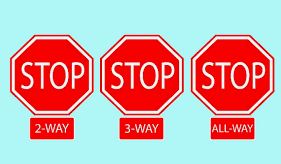
4- Right Turn on Red and Left Turn – Which Lane to Enter?
Right Turns on Red
Many tourist drivers are surprised to see they can turn right on red. And when they don’t do it, because they are not used to in their country of origin, drivers behind start to hit the horn, and the visitors don’t know why.
Here in the US, in all 50 states, Washington DC, Guam and Puerto Rico it is allowed to turn right on red since 1980, except where prohibited by a sign or where right turns are controlled by dedicated traffic lights (more on this later).
This is how you should proceed:
• Approach slowly to the corner and stay as far to the right as possible.
• Start the turn in the lane nearest to the right side of the road and end the turn in the nearest lane to the right-hand curb.
• Don’t forget to give turn signals.
• Watch in the direction of the oncoming traffic on the street you are intending to merge. If no one is coming, you can proceed.
• Yield to pedestrians and bicycles crossing your path.
In some corners, you will see the No Turn on Red sign and that is the indication that you cannot turn right in that intersection.

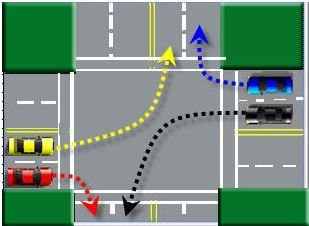
Left Turns
In some traffic lights, you will have the green or red arrow indicating when you can or cannot make a left turn. But if the arrow light is not there, or if there is no sign prohibiting the left turn, you certainly can do it.
This is how you should proceed:
• Turn on the left light signal and approach slowly on the designated left lane, all the way to the left.
• Look both ways and make sure the oncoming lanes are clear.
• Traffic coming in the opposite direction has the right of way.
• Start the turn in the left lane and enter the nearest lane, which is on the left lane of the road if there is more than one lane. See picture below.
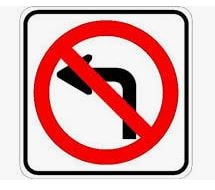
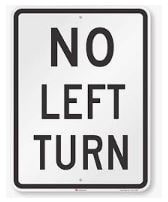

U Turns
In highways with several lanes with traffic in both directions, if you need to make a U Turn, it is allowed to do so. It is only forbidden where you see the sign that indicates it.


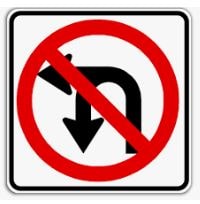
5- Speed Limits & School Zones
Speed Limits
Speed limits vary depending on the area and type of road you drive on. Speed limits posted are the fastest speed you may drive under ideal conditions. It’s your responsibility to adjust your driving speed to the weather, visibility, road and traffic conditions. For example, during a storm, you should drive slower than the posted limit.
The safest speed is the one that allows you to have complete control of your vehicle and avoid collisions.
Very important to remember that the speed limits posted are in miles per hour (MPH) and not in kilometers per hour (KPH).

School Zones
This is something that is not existent in many countries so you might not even know what it is. School Zones are areas with specific speed limits at certain hours of weekdays which are usually posted on signs way before the actual school zone alerting its proximity.
Some school crossings have guards that will ask the traffic to stop to allow pedestrians to cross.
Pedestrians always have the right-of-way.
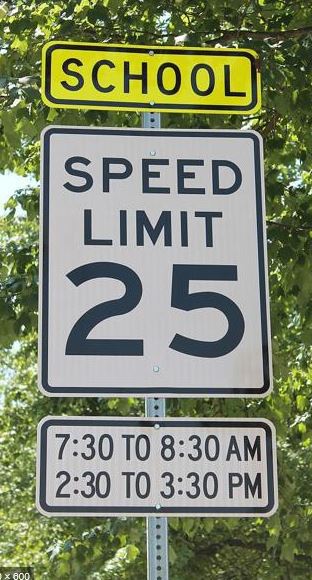

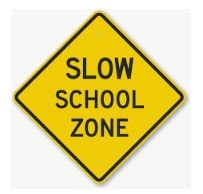
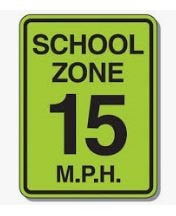
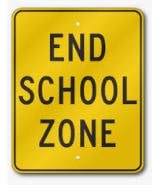
FUNNY TRAFFIC SIGN T-SHIRT COLLECTION
School Buses
You might be driving on any road, even away from a school zone, but if you see a school bus with the Stop Sign displayed out, that means you must stop the car and give students access to the bus or get off the bus and cross the street safely. You can resume driving after the bus has folded back the sign.

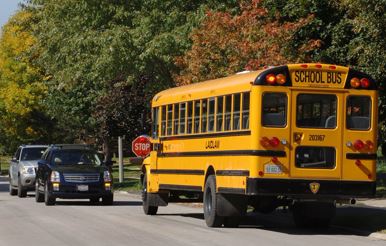
6- Park in the Right Spot
Parking is free in most of the shopping centers and malls. If you park on the street make sure you are not parking next to the curbside that is painted in yellow or white. That is a No Parking area.
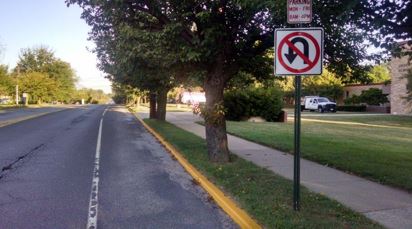
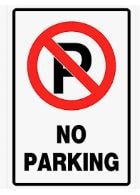
Look around before you park
Make sure you do not park blocking a driveway or any type of vehicle entrance to a building, blocking a hydrant, or blocking a wheelchair ramp or access path.
Do not park where a No Parking sign is posted.
Residential Parking
In some blocks, especially in Miami Beach, there are residential parking areas where you can only park if you have a decal or sticker given by the city to residents of that block. Check the sign for instruction and specific hours of the day where you can or cannot park in that area.
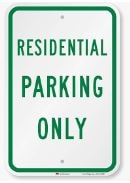
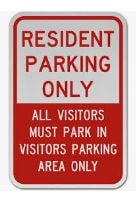
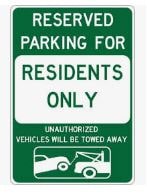
VERY IMPORTANT
Do not park in spaces for disable permit only, also known as handicap parking. Fines range between $250 and $450 depending on the area. And they will not only fine you for the violation, but they will tow your car as well. Then you will be responsible for the fine, the towing and the fee to get your car back, even if the car is a rental.
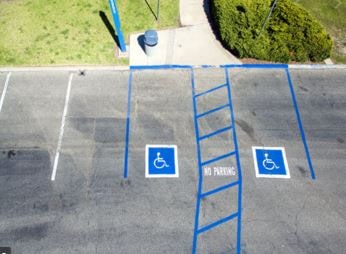
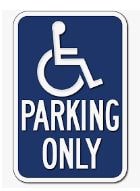
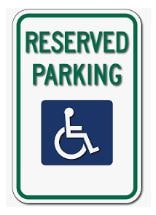
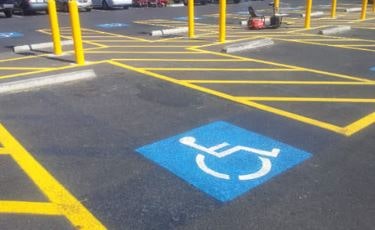
Street Parking
In some areas, you will see the traditional parking meter to pay for your parking or you will see the paying stations close to the middle of each block.
If you find a paying station, you just need to touch any key for the instructions to show on the screen. In all of them you have the option to choose the language, English, Spanish and sometimes even French for your convenience. They usually take credit cards or cash.
If the station you found is not working, you are responsible to find another working station to pay for parking.
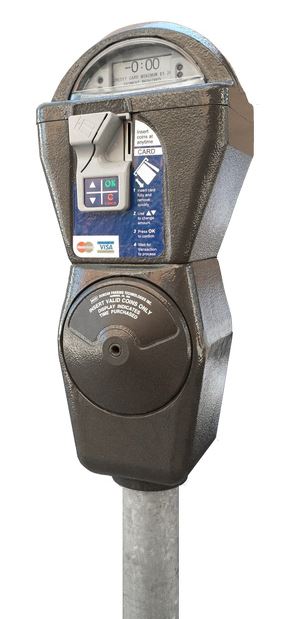
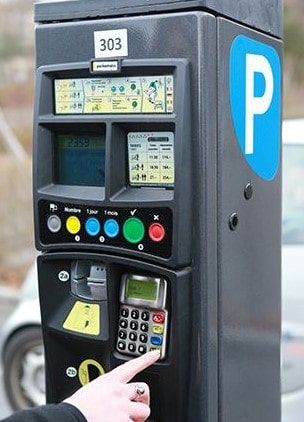
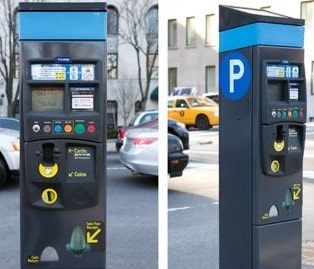
Public Parking Buildings
Another option for parking besides the street parking spots, are public parking buildings. There are several of them though out the city and sometimes are even cheaper than street parking.
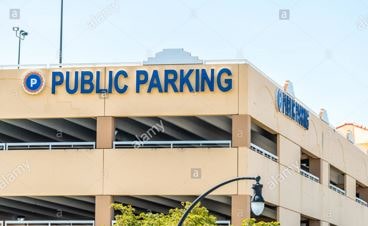
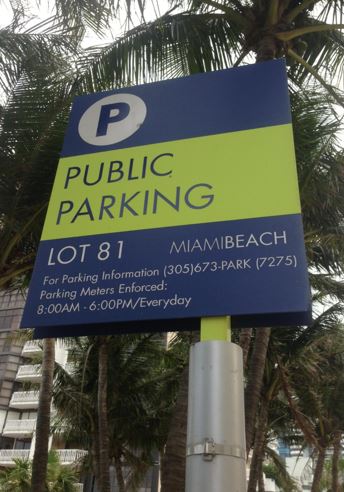
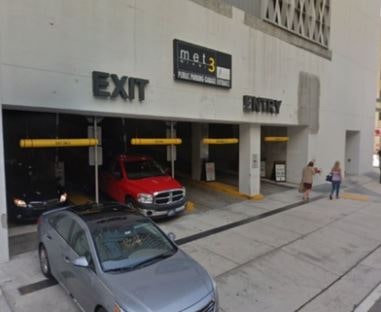
Using an App for Paying Parking
For those techy people, using an app is the most convinient way to pay for parking. There’s no extra charge and you get a notification when your time is about to expire. Best of all, you don’t need to go back to the parking space to add more coins, you can extend the parking time in the app from whereever you are.
How to know wich app to use?
Most likely that you will see the name of the app posted by the parking space or nearby, which you can download if you don’t already have it. And the location number will be also posted there.
7- Passing a Vehicle in an Expressway – Tolls & Roundabouts
Passing a Vehicle
• In a two-lane road going in the same direction, you should drive on the right and pass on the left.
• If you are driving on a road with more than two lanes going in the same direction, passing on the right is allowed.
• It is not allowed to pass on the right when that means driving on the road shoulder.
• Is not allowed to pass when is posted by this sign.
• Always use the signal lights to let others you are changing lanes before passing.
• You should not attempt to pass more than one vehicle at a time. Passing multiple vehicles is dangerous.
Never pass a school bus when it displayed a stopped signal. Children might come out from behind the bus to cross the street.
Tolls
Most highway tolls have been automated; therefore, it is no longer necessary to stop when passing through a booth to pay the toll.
Automation is that vehicles have a sticker with a unique number to identify the car, which is detected by cameras when passing through the toll plaza. The company that handles these tolls is called Sunpass and you will see several posters on your way through the city.
There are only a few tolls left that still handle the physical payment, especially on rural highways, for example on the way to Orlando, and that is well signposted well in advance indicating which lane to choose if you plan to pay with cash.
If you are renting a car and plan to move along the city highways, or if you plan to visit other cities in Florida, I recommend that you pay a flat rate at the company where you rent the car so you don’t have to worry about it.
If you are a resident of the city or if your trips are frequent, then you should get a Sunpass.
What happens if I decline the pre-paid toll (aka Sunpass) the car rental company offers?
Although it is not mandatory, to pay for the Sunpass or pre-paid toll offered by car rental companies, if you go through an automatic or express toll, the company can charge you up to $ 15 each time up to a maximum of $ 90 in administrative fee , plus the corresponding toll. Information obtained from the Sunpass page.
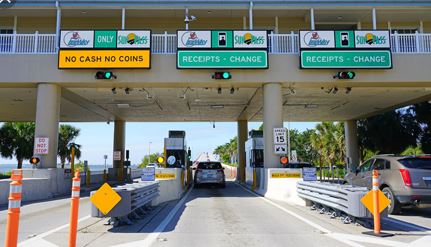

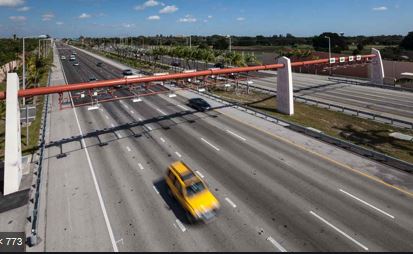
PICK YOUR T-SHIRT DESIGN HERE!
Roundabouts
Although there are not many roundabouts in Miami as there are in other countries, you will find a few. The fact that there are not many roundabouts might be the reason why many residents sometimes don’t know how to proceed when they find one.
Roundabouts are circular intersections with no traffic signal.
Here are some rules you should follow:
- The simple roundabouts travel in a one-way counter-clockwise direction.
- Drivers entering the roundabout must yield to traffic already in the roundabout.
- If there is no traffic in the roundabout, you may enter without yielding.
- Do not change lanes in the roundabout.
- Do not stop in a roundabout to let someone enter. Vehicles in the roundabout have the right-of-way.
- Signal before exiting the roundabout.
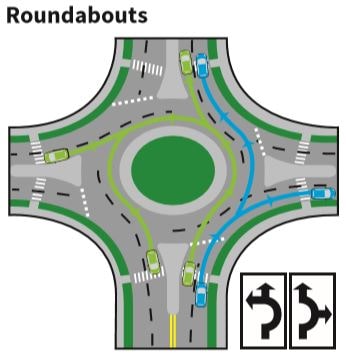
Multi-Lane Roundabouts
The same rules as single-lane roundabouts apply, however you will need to choose the proper lane before entering the roundabout. To go straight or right, use the right lane.
8- Littering & Seatbelts
Two simple common sense actions every driver and passenger should know and execute, but sometimes they are forgotten.
One, Littering
Do not throw your garbage out the vehicle window. No matter if you are driving or in a parking lot. It’s not only disgusting and says a lot about the person doing this, but it’s also the law. If you do, you could be fined.
Be nice and don’t litter! Be smart and keep your garbage in your car to dispose of it later.
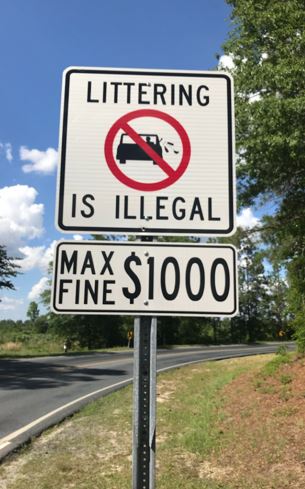
Two, buckle up!
Put your seat belts on. It’s also the law and your life could be saved in an accident.
Buckle Up! It’s the law!
• Florida law requires that all passengers in the front seats, driver and companion, wear seat belts and it is the responsibility of the driver to make sure this is being done.
• All passengers under 18 years old should wear a seat belt even if they are riding in the back seats.
• Children under 4 years old need to ride in a safety seat.
• Children 4 to 5, may use a safety seat or a booster seat. These special seats are available in all car rental agencies for an additional fee.
A seat belt, (without a booster seat) may only be used for children 4–5 years of age when the driver is not a member of the child’s immediate family and the child is being transported as a favor or in an emergency.
I’ve seen several times children in the front seat and even in the back seat playing or standing in the back between the two front seats. That is very dangerous and if the drivers have to brake abruptly for any reason, that child will fly through the windshield.
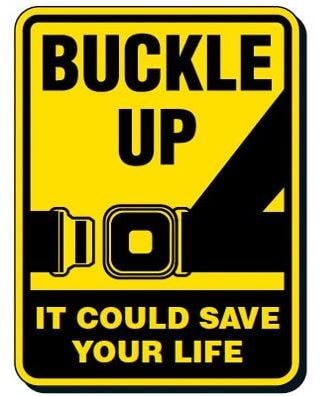
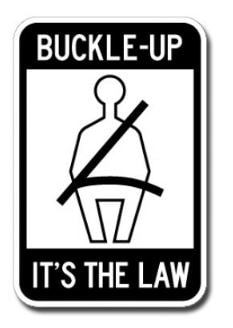

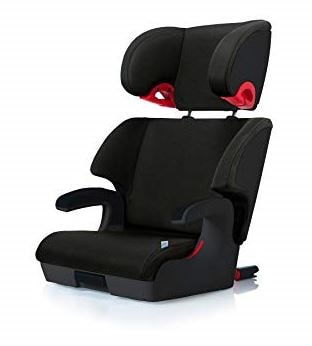
9- Living Valuables, Children or Dogs in the Car
Living valuables and packages on the seats or floor of the car is not recommended. There are thieves and criminals all over the world and they can break a window, even if it’s only some old dirty towels in a bag. They do not know what’s in the package or bag, so leave everything in the trunk where it cannot be seen from outside.
If valuables are not supposed to be left in the car, what could it be more valuable than children and pets?
Especially in the summer, when temperatures rise very high and quickly, your children, as well as your pets, can die of suffocation.
Be also aware that it is legal for anyone who sees a child or a dog or any other animal inside a car left alone, to break the glass in order to help the child or pet, and the police will not take any action against that person. Most likely they will take action against the car owner.
Taking your Pet with You to Everywhere
Nowadays it has become trendy for pet owners to take their pets everywhere they go. But let me state something here and clarify any doubt, if the pet is not properly trained as a service animal they do not, I repeat, they do not like to be taken outside their house and it is not even safe for them either.
They do not like crowds and noises. They do not like loud music. They do not like to walk at the pace of humans, especially if they are small dogs. They do not like to be petted by everyone that crosses their path.
So, if you love your pet, especially dogs, leave them in the comfort of your home. They will be grateful and happy to see you back when you return. If you think your dog gets bored and anxious left home alone, leave the TV on or some soft music at a low pleasant volume for them to hear.
If you have to take your dog with you, especially because it’s a service animal, they should ride in the back seat. That habit of taking your dog next to you and sometimes even in your lap while driving is very dangerous for your dog and you, as well.
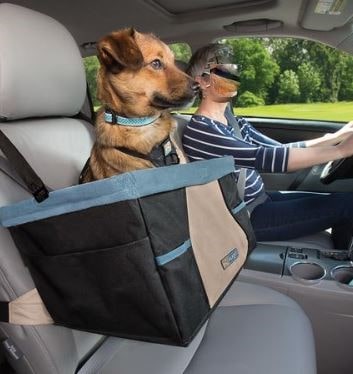

10- Plan and Schedule Your Itinerary • No Driving in a Bad Mood
Plan your route and time of departure and return
Avoid scheduling these rides during rush hours. It will take you longer to reach your destination and you will have to deal with hundreds of residents who are in a hurry to get to their work or home.
Use a GPS or google maps to plan your route and remember to check alternate options in case of heavy traffic.
Do not drive during or after a heated discussion or in a bad mood
If you have been involved in a heated discussion or you are in a bad mood, frustrated or depressed, do not drive. Let someone else do the driving for you or wait as much as you need to feel better.
If waiting is not an option, think of a taxi, Lyft or Uber service.
VISIT THE STORE
CONCLUSION
In summary, all of these tips could be condensed in the following few words:
• Drive fully engaged
• Your hands on the wheel
• Eyes on the road
• And keep your mind on driving.
Avoid watching videos or texting. The use of headphones and loud music that will isolate you and will prevent you from hearing the traffic and sirens around you is not permitted.
Avoid engaging in conversations, especially if they are heated conversations.
I know that sometimes is hard not to engage in a conversation, especially if you are on vacation and want to share your experience with friends and family. Use your discretion and always think of your own and your passengers’ safety.
If you’re a tourist and want to sightsee and enjoy the city landscape, take a regular street instead of the expressway, otherwise, you will only see cars. I would only use the expressway only for long distances.
Make frequent stops, get off the car and enjoy the area. Remember you are on vacation but many around you are not.
If you want ideas on where to go for a great views, take a few awesome pictures and even a quick bite and drinks, take a look at this post.
And here you will find important information about Miami International Airport. It could be for you or a friend. Who knows?
Have you already driven in Miami? Was there something you struggled with?
Do you want me to add something you think is important?
How was your experience driving in Miami and what city in the world are you from?
If you think this could be useful for someone you know, don’t forget to share this article by clicking on the social media buttons below.
Thanks for reading my post to the end and if you want me to notify you when I publish the next article, type put your name and email address in the small form below. As appreciation you will receive a list of 101 Things to Do in Miami.






















Great Information . I only wish people would follow these very simple rules and we would all be safer. Thank you
Agree with you 100%, Lourdes! One great reason to pass it on to your friends! 🙂
Hello everyone,
I truly like your work and your blog is quite interesting. I have
to appreciate your work and efforts . It is incredible.
King regards,
Lunding Raahauge
Thanks for your kind words, Lunding. If you’re planning to visit us in Miami, don’t forget to download the Free List of 101 Things to Do in Miami. Here’s the link: https://edalemany.com/free-stuff-2/
King regards,
Mead Duke
Hi Ed
Fantastic information. I wish everybody would read and follow all these rules.
Thank you
Have a nice day.
Regards,
Lourdes